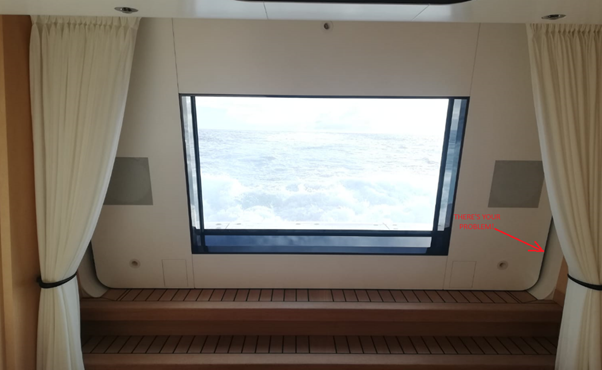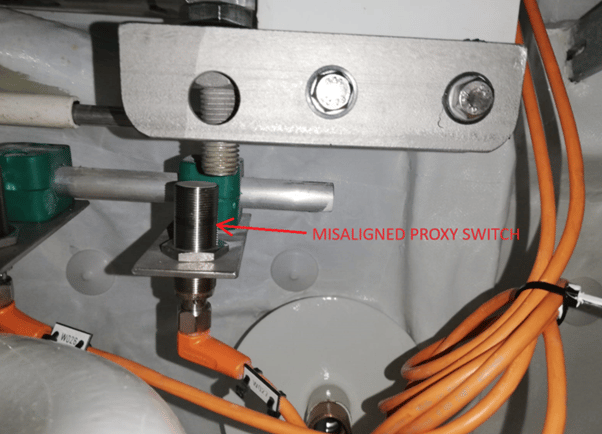Stern door refusing to open


I received a call to investigate why the hydraulic stern door (also known as the transom door) was not opening. Upon starting the pump from the local panel and pressing the door opening button, I heard the pump running and locking pins move, but the door itself remained stationary.
Drawing from my experience with hydraulic equipment, I concluded that the issue lay in one or more unmet conditions for the door opening sequence.
To be precise, all door-related operations – including opening, closing, locking, unlocking, starting and stopping the pump, alarm output etc. – are monitored and controlled by the PLC (Programmable Logic Controller). The PLC is programmed to activate specific outputs based on certain inputs.
In this case, the output is door opening, and the inputs would include the unlocked pins and potentially others. Without delving into the PLC programming, we cannot determine precisely which inputs activate specific outputs or identify all the necessary inputs to activate a particular output.
This is where experience kicks in.
I knew that for the door to open, the PLC must receive a signal from the proximity switches indicating that the locking pins are unlocked. Although unsure if this was the sole required input, it was the logical starting point for troubleshooting.
This being my first encounter with this door, I was uncertain of the number of locking pins it possessed, but I anticipated at least four based on experience. Upon inspection, I identified only two pins, located on either side of the door. I proceeded to check the proximity switches that are indicating the pins’ locked and unlocked position to ensure their proper functionality.
The proximity switches on the starboard side were indeed functioning correctly, as evidenced by the illuminated LED indicator upon activation. However, upon inspecting the switches on the port side, the issue became apparent.
Proximity switch indicating unlocked position was misaligned and thus not getting activated when the pin would indeed move to the unlocked position. The nut holding the switch in place might have gotten loose or was never tighten well in the first place.
After a small adjustment of the proximity switch position and, the door started operating properly.
This was a simple issue but now let’s take it a bit further.
What if adjusting a misaligned proximity switch failed to resolve the issue?
Such an outcome would suggest either a misdiagnosis of the underlying problem or the simultaneous occurrence of two distinct issues hindering the door's operation.
The former scenario is far more probable, as the latter is a rare occurrence based on my experience. Therefore, after making sure the suspicious proximity switch is behaving correctly, I would continue troubleshooting.
My next idea would be – after the pins are unlocked, what else needs to happen for the door to open? There is a hydraulic swimming stairs in front of this door so perhaps there is an interlock between these 2 door. Are the swimming stairs stowed and locked?
If that would be OK, I would probably pick up a drawing and look at all the inputs to the PLC and try to figure out which one might be the condition for the door to open.
If I couldn’t figure it out, I would try to connect to the PLC and check the diagram to identify the inputs.
If I couldn’t connect to the PLC, I would ask for the help from the supplier/manufacturer; either I would ask them what are the conditions to open the door or, if they were in a good mood, I would ask them to provide a copy of the PLC diagram so I have a good reference for the future troubleshooting.
In the event of an urgent need to open the door, I would resort to manual operation:
1. Ensure the locking pins are unlocked and no physical obstructions hinder the door's movement.
2. Start the pump.
3. Activate manually the main valve and then activate manually the door opening valve.
Thanks for reading and I hope you enjoyed it! Have a great day!

